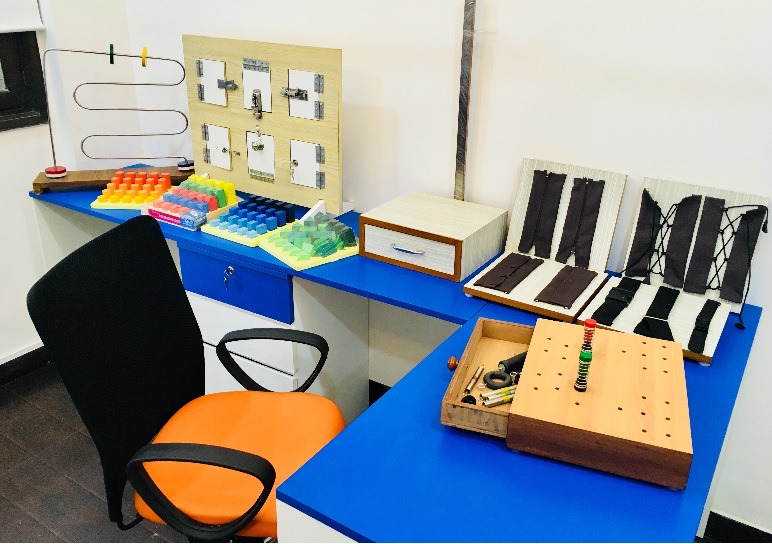How it Benefits:
Occupational therapy (OT) treatment focuses on helping people with a physical, sensory, or cognitive disability be as independent as possible in all areas of their lives. Occupational therapy can help person with various needs improve their cognitive, physical, sensory, and motor skills and enhance their self-esteem and sense of accomplishment.
What are the domains of Occupational therapy?
a. Neurodevelopment Therapy Clinic
NDT is a holistic and interdisciplinary clinical practice model informed by current and evolving research that emphasizes individualized therapeutic handling based on movement analysis for habitation and rehabilitation of individuals with neurological pathophysiology. The therapist uses a problem solving approach to assess activity and participation, thereby to identify and prioritize relevant integrities and impairments as a basis for establishing achievable outcomes with clients and caregivers. Therapeutic handling, used during evaluation and intervention, consists of a dynamic reciprocal interaction between the client and therapist for activating optimal sensorimotor processing, task performance, and skill acquisition to enable participation in meaningful activities.
b. Multi-Sensory Integration Clinic
The process of the brain organising and interpreting this information is called Sensory Integration. Sensory experiences include touch, movement, body awareness, sight, sound, smell, taste and the pull of gravity. Sensory Integration (SI) provides a crucial foundation for later, more complex learning and behaviour. Children with deficient sensory processing leading to hypokinetic/ hyperkinetic behaviour need coordinated program of multiple sensory stimuli: proprioceptive, kinaesthetic, visual & auditory to normalize function.
c. Neuro - cognitive therapy
Cognition refers to information-processing functions, including attention, memory, and executive functions (i.e., planning, problem solving, self- monitoring, and self-awareness). Impairments in functional cognition are common and can result from multiple causes, including: Human genetics and/or development, Neurologic disease, injuries, and disorders. Occupational therapy practitioners focus their interventions on the relationship between the client’s cognitive skills, functional performance, and environmental context to enhance the daily life experience of individuals with cognitive impairment.
d. Self-Care Programme:
Self-care skills are the everyday tasks undertaken so children and adults with multiple disabilities are ready to participate in life activities (including dressing, eating, cleaning teeth). They are often referred to as the activities of daily living (ADL’s). Self-care skills are one of the first ways that develop the ability to plan and sequence task performance, to organise the necessary materials and to develop the refined physical control required to carry out daily tasks.
e. Hand Therapy
Hand therapy is the art and science of evaluating and treating injuries and conditions of the upper extremity (shoulder, arm, elbow, forearm, wrist and hand). It uses a number of therapeutic interventions to help return a person to their highest level of function.
Hand therapy typically addresses the biomechanical issues underlying upper-extremity conditions. Occupational Therapist use an occupation-based and client-centred approach that identifies the participation needs of the client—what he or she wants to be able to do in daily life that is fulfilling, necessary, and/or meaningful—and emphasizes the performance of desired activities as the primary goal of therapy.

